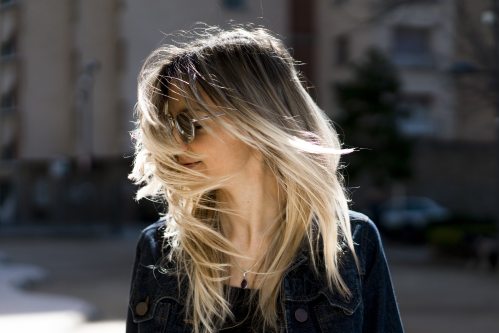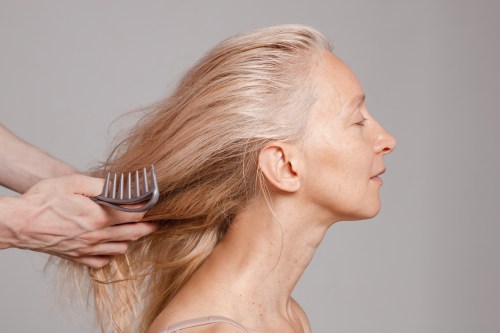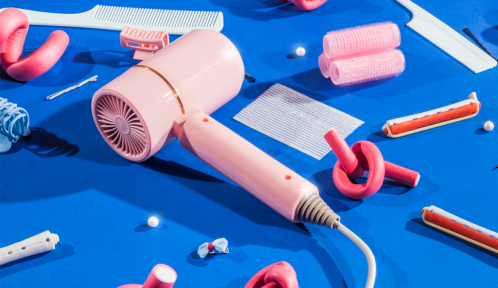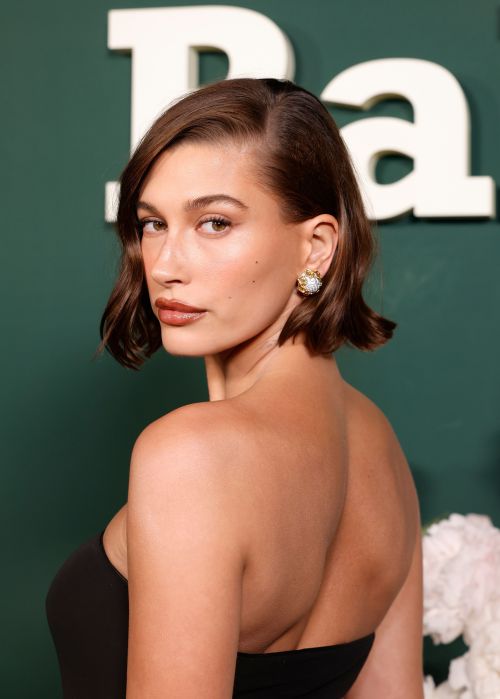How to deal if hair dyes make your scalp itchy and red
Here's what you should know about hair dye allergies and allergic reactions, according to Wella Professionals hairstylist Sonya Dove.

A few months ago, a photo made the rounds on the Internet of a woman who’s head swelled to twice it’s normal size after she had an allergic reaction to hair dye. It was shocking, to say the least, but most allergies to hair dye are way more subtle: itchy red scalp, watery eyes, and flaking. It begs the question: Is there any way to really avoid hair dye allergies or even the sensitivity that comes from allowing dye to sit on the scalp for hours?
Despite the fact that we, as consumers, now care more than ever about the ingredients in our beauty products, hair dye is one aspect of the industry that hasn’t seen a ton of forward progress. Unless you’re interested in toning your strands with things like coffee or beet juice, there is no such thing as “natural hair dye.” Chemicals need to be applied to open the cuticle of the hair, so that the color molecule can go into the cortex of the hair (and stay there!), resulting in the glorious and strikingly different “after” photo. Many products on the market contain a combination of ammonia and peroxide. While things are admittedly getting better—in October of last year, the FDA banned lead acetate as a color additive in dyes, and Madison Reed introduced the first ever “six-free” product—there’s still a ways to go.
“There are products in hair color that trigger allergies to hair color called PPD (1,4-phenylenediamine) and PTD (1,4-toluenediamine),” says Wella Professionals Global Creative Artist Sonya Dove, noting that these dye molecules are also main ingredients in tattoo ink. “They’re actually a dye molecule, and they have been used in hair color for over 100 years.”
Until recently, that is: A new molecule called Me+, which was created by COTY last year and can be found in Clairol’s Nice n’ Easy line and Wella Professionals’ new Koleston Perfect dye, has begun to replace the usual PPD and PTD in hair dyes. According to Dove, this technology will make clients 60 times less likely to develop a new allergy to dye than other products on the market.
To break it down for you (in a way that feels as little like high school science class as possible), the scientists behind ME+ “modified the shape of the dye molecule to prevent an immune system reaction between the T-cells and the dye molecule,” says David Sarro, director of research and development for Coty Professional Haircare.
Think of it as an encapsulated version of the PPD and PTD that has been used for decades. “Think of it as like M+M’s. You know how M+M’s have the hard candy shell, but inside is the good chocolate that’s really what you want to taste? It’s almost kind of like that,” says Kerry Yates, Trichologist & Founder of Colour Collective.” It’s encapsulated so that color molecule that you need to process the color, and it’s almost a barrier so that it’s almost like at the last minute it reacts so that it doesn’t initiate that allergic reaction.”
Though an allergy is significantly less likely happen with this new molecule in place, it is still possible, which is why doing a 48-hour spot test is recommended any time you’re planning to use any sort of permanent dye. If you ignore this advice entirely and go straight for your scalp, there are a few ways to identify whether or not you’re allergic (ya know, if your head doesn’t happen to double in diameter). “You get itchy eyes, you feel hot, you would feel that immediately,” she says. “And also you’ll feel some skin irritation on the scalp where the hair dresser is applying the color, and then later you get swelling.”
Even without having an allergic reaction, you can have sensitivity to dyes and this happens because of a pH discrepancy between the scalp and the product that’s going on it. The pH of hair dye is around 10 to 11 and the pH of hair and skin is between 4.5 to 5.5, so having something with a vastly basic pH can make the scalp react.
If you are allergic or sensitive to traditional hair dyes, all hope isn’t lost for figuring out a solution. “There’s a product called Hair Print that doesn’t have those traditional types of dyes within it, so that could be another alternative,” says Yates. “Also proper semi-permanent hair color. This is a color that’s not being mixed with an oxidizer, so it’s not being combined with any sort of peroxide products, it’s just being used straight out of the bottle. Any people who have an allergic reaction, I always refer them to something like that.” The only negative with this type of dye, though, is that doesn’t strip away the natural color without an oxidizer, so it doesn’t offer as much full coverage.
Should you experience itching or sensitivity, try an aloe mist, such as Christophe Robin Hydrating Leave-In Mist ($39) to the root of the hair and try to use a gentle shampoo like Kristin Ess Gentle Shampoo ($10) so that you don’t strip more moisture from the scalp.
For a new way to change up your hair this year, sans dye, try some accessories. If you are going the dye route, though, here’s exactly the shampoo you should be using.
Sign Up for Our Daily Newsletter
Get all the latest in wellness, trends, food, fitness, beauty, and more delivered right to your inbox.
Got it, you've been added to our email list.










